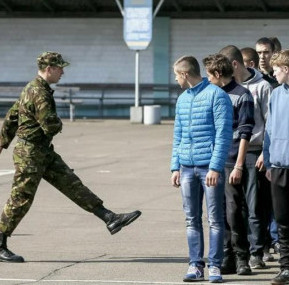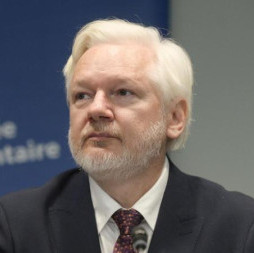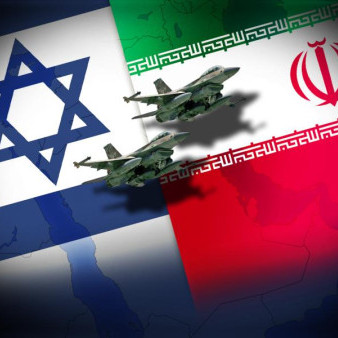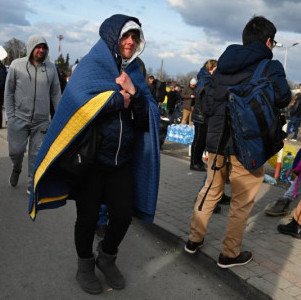The new government of Norway headed by Jonas Gahr Støre (leader of the Norwegian Labor Party) wants the planes and ships of its NATO allies to keep some distance from Norwegian-Russian border areas. This came in a report by the local Verdens Gang (VG) newspaper with reference to Norwegian Foreign Minister Anniken Huitfeldt. Not everyone in NATO seems to be willing to blindly heed US rampant Russia policy. There are several reasons for that, including Norwegian healthy pragmatism and consciousness due to centuries-old neighborhood with Russia, which has never been overshadowed by armed conflicts.
"For us, a military presence near our borders is important. But, in our opinion, it would be better if in the immediate vicinity of the Russian border we manage ourselves – with the help of Norwegian planes and frigates. It’s very important for us," Huitfeldt said. What's the matter? Are the Norwegians conceiving to establish a distance with the United States? It sure seems that way. Judging by their covert moves in Ukraine, the United States has prioritized the task of making Russia undertake some kind of armed action, in order to expose Moscow to overwhelming ostracism and finally make the Russians look like outcasts in the "democratic world". The next step would be new across-the-board sanctions, international pressure and even coercion to cross the "red lines".
Considering the worst-case scenario, the United States may use a forced Russian response to its own provocation – when Moscow is forced to respond being unable to "swallow the uneatable" – as an excuse for unleashing a hot war. And who said Ukraine is the only springboard for US teasing Russia? The Norwegians are well aware that their country is no less a convenient player, which may be used as an irritant for Moscow and even as a field of hot confrontation with Russia.
The same VG writes: "Two rounds of British and American naval exercises in the Barents Sea in 2020 attracted a lot of attention, especially when they affected the economic zone of Russia in September last year. Then the Norwegian frigate Thor Heyerdahl, together with British and American ships, passed to the east of the Varangerfjord and at some point, they came within 50 nautical miles of land, which was already within the economic zone of Russia." Just a reminder: Varangerfjord is a large bay, with its mouth located in the area of the Norwegian-Russian border zone in the Kola Peninsula's northern part. The question is why should Americans and Britons "graze" in this area? For the sake of testing endurance of the Russians?
The Norwegians are well aware that they may well become a bargaining chip for the United States in its irresponsible policy of escalating tensions around Russia. At the same time, the USA is far away, while Russia is next door, having both a maritime and 196-km land border with Norway. Their centuries-old neighborhood has never been overshadowed by armed conflicts.
VG notes that the Russians have gotten used to the Norwegians and don't see a threat in them. Neither do the latter. "We are trying to convey to our partners that Norway is NATO in the north. Russians are used to Norwegian planes and ships in the Barents Sea. And to our Intelligence Service's vessel Marjata sailing there. We want it to remain that way in the future: not American P8 reconnaissance planes flying east of Annaya (a Norwegian island in the Barents Sea – ed. note), but our own," VG quotes former head of the Operational Headquarters of the Norwegian Armed forces Rune Jakobsen as saying.
It stands to reason that in case of an armed conflict that can be provoked by the Americans next to the Norwegian-Russian border, first Norway, and then the United States will become target for Russian missiles and other means of "peace enforcement" Russia may use. But the Norwegians routinely have a huge national budget surplus thanks to exporting gas and oil from the North Sea to Europe. They enjoy their beautiful nature and comfort of well-developed towns and villages, which is hardly worth being exchanged for a war, especially in somebody else's interests.
That's why Minister Huitfeldt said she wanted to raise the issue with the UK and the US. "It is in Norway’s interest to take care of these areas on its own, with the Norwegian defense," she said, making it clear that Norway is never going to voluntarily engage in any conflicts with the Russians. And that's a lot.
Indeed, the US is really persistent and clingy. We still have to see how it's going to bend the Norwegians across its knee. The latter take turns to face the music and yield to American pressure. For instance, February 2018 saw Norwegian Defense Ministry's Tune Skugen speak at the European Parliament's Subcommittee on Security and Defence (SEDE) and say Norway does not consider Russia as a threat and doesn't think it may pose any in the near future. In March that year, then Norwegian Defense Minister Frank Bakke-Jensen met with his American counterpart James Mattis to express concern about Russia's "growing aggression" at the kingdom's borders. Why such a U-turn?
It's just that by this moment the Americans were ready to establish a more permanent American presence at the airfield of the Norwegian island of Andøya by locating 8 to 12 US Navy P-8A Poseidon reconnaissance aircraft there to monitor Russian maritime activity in the North Atlantic and in the Arctic regions, as stated in the official memo by the US Ministry of Defense's Intelligence Agency.
It is noteworthy that the Norwegian Constitution prohibits any permanent presence of foreign military bases or troops in the country's territory in peacetime. To circumvent this clause, the United States offered to make its aircraft rotationally deployed there. So, the planes' presence is de jure temporary. Let's wait for the Americans to respond and for the stubborn Norwegians to act.









